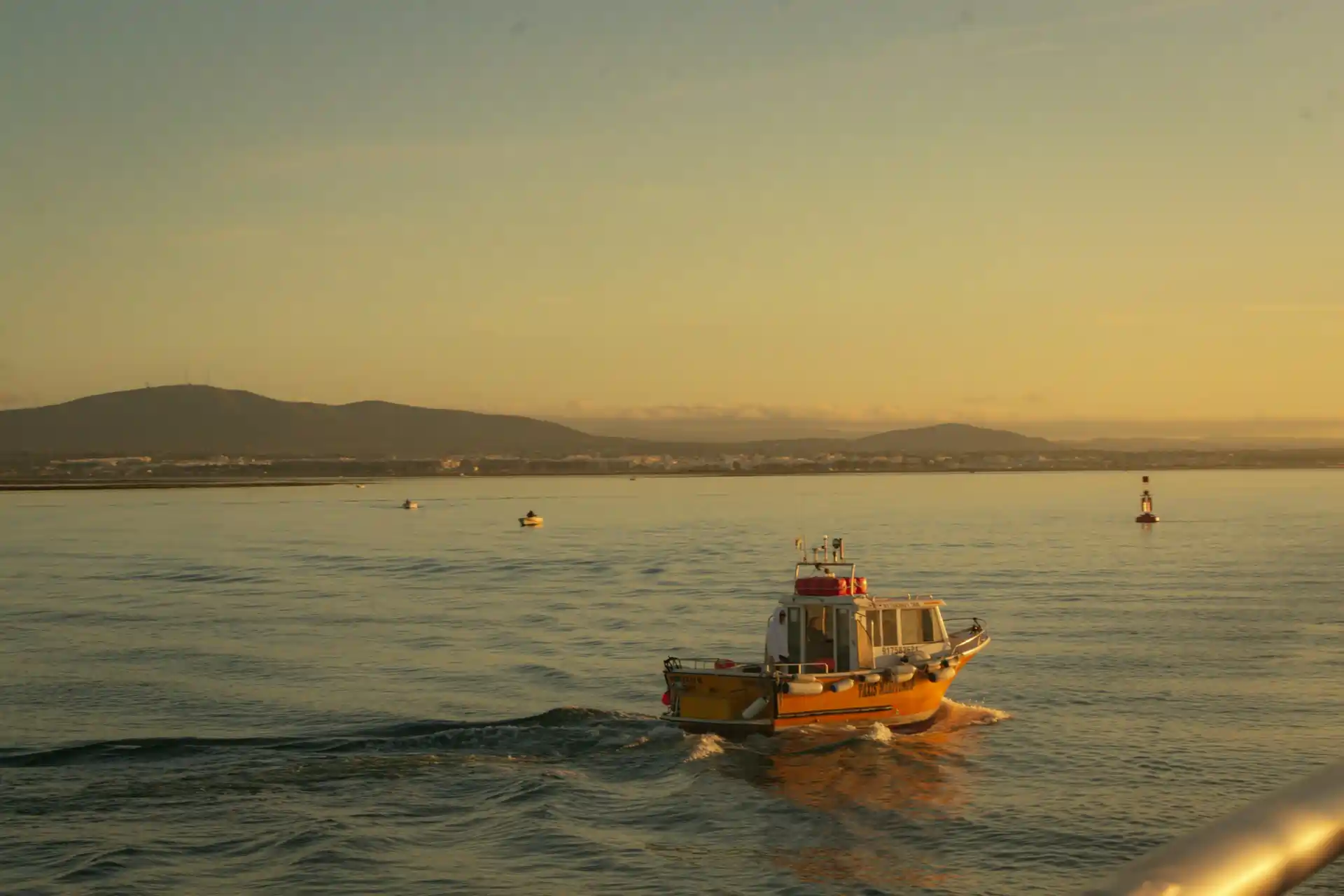

Olhão isn’t your typical Algarve destination. It doesn’t fit the usual postcard image of southern Portugal. The best way to describe Olhão is simply to say that it is Olhão – unique, different, and undeniably authentic.
Despite its modest size (with a population of around 30,000) and central location in the Algarve, Olhão often flies under the radar for many tourists. The reason is clear: it’s a town that has, until now, largely avoided the spotlight of mass tourism, embodying what the Algarve might have been without it.
For us, Olhão is a more genuine version of the historical centers of Lagos or Tavira, towns where tourism has made an impact but hasn’t overwhelmed the local character. Walking through the streets of Olhão, through its Fishermen’s Quarter, its Municipal Market, or along the Ria Formosa, you’ll find an authenticity that is sometimes hard to come by in southern Portugal.
Olhão is the fourth-largest city in the Algarve, after Faro, Loulé, and Portimão. Yet, many would struggle to pinpoint it on a map. To help, Olhão is located about 10 kilometers east of Faro, nestled between Faro and Tavira.
Olhão is well-connected to other cities in the Algarve via train, which runs from Vila Real de Santo Antonio to Lagos (with a mandatory train change in Faro). Conveniently, Olhão’s train station is centrally located, just 800 meters from the Municipal Market.
Upon arriving in Olhão, we parked along the waterfront promenade (officially Avenida 5 de Outubro) and immediately sensed that this place was different from any we had visited before. The bustling heart of the town is the Municipal Market, housed in two buildings dating back to 1912. This market is a must-visit for anyone coming to Olhão.
Surrounding the market are the Jardim Patrão Joaquim Lopes and the Jardim Pescador Olhanense, both of which highlight the town’s deep connection to the Atlantic Ocean and its fishing heritage, still vital to the local economy.
Next to these parks lies the Zona da Ribeira, a fantastic promenade along the water, dotted with boats and restaurants – perfect for a leisurely stroll. From here, you can enjoy stunning views of the Ria Formosa.
Often referred to as the “Cubist City,” Olhão’s architecture is reminiscent of Picasso’s artistic movement, with buildings that feature unique, cube-like shapes. Wandering through the city, it’s easy to see why it has earned this nickname. The whitewashed, timeworn buildings are a testament to the town’s enduring charm.
Perhaps the highlight of a visit to Olhão is exploring the Fishermen’s Quarter. This maze of streets and cubic buildings, laid out on a sometimes irregular and winding plan, is well worth a slow, thoughtful wander.
One of the most captivating experiences in Olhão is the Legends Route, a collection of myths and tales deeply rooted in the town’s history, passed down through generations. The town has embraced these stories by installing five sculptures in different squares, each telling a unique story.
• The Legend of Marim, located on Rua da Fábrica Velha, tells of a young man’s quest to win the love of a Moorish girl despite her father’s disapproval. The tale ends tragically with both falling to their deaths, but legend has it that Allah spared them because of their deep love for each other.
• Other legends can be discovered in Praça Patrão Joaquim Lopes, Largo da Gaibéu, Largo do Carolas, and Largo Joäo da Carma.
For those looking to explore beyond the town, Olhão offers access to beautiful nearby beaches. Located on the other side of the Ria Formosa, three of the four beaches we recommend require a short boat or ferry ride to reach.
• Armona Beach: The closest to the town, located at the western end of Armona Island. It’s relatively quiet, with a few bungalows and houses. Water sports are also popular here.
• Fuseta Beach: Situated at the other end of Armona Island, this beach is always peaceful, with crystal-clear waters and fine sand – one of the best beaches in the Algarve.
• Cavacos Beach: Located within the town itself, Cavacos Beach is small and less charming than the others but offers a convenient alternative if you can’t reach the other recommended spots.
• Culatra Beach: Found on Culatra Island, this beach is tranquil year-round, even in peak season, and offers a few restaurants and bars near the ferry landing.
As we prepared to leave Olhão for our next stop, Faro, we noticed that several hotels and apartment complexes were being built near the town. While this development might boost the local economy, we believe that Olhão’s greatest asset is its authenticity. Without it, Olhão risks becoming another Albufeira – highly touristic but lacking soul.
We hope you visit Olhão and enjoy this hidden gem as much as we did. This city is a rising star, and it’s only a matter of time before it shines brightly on the Algarve’s tourist map. Let’s hope that time treats it kindly.
algarve